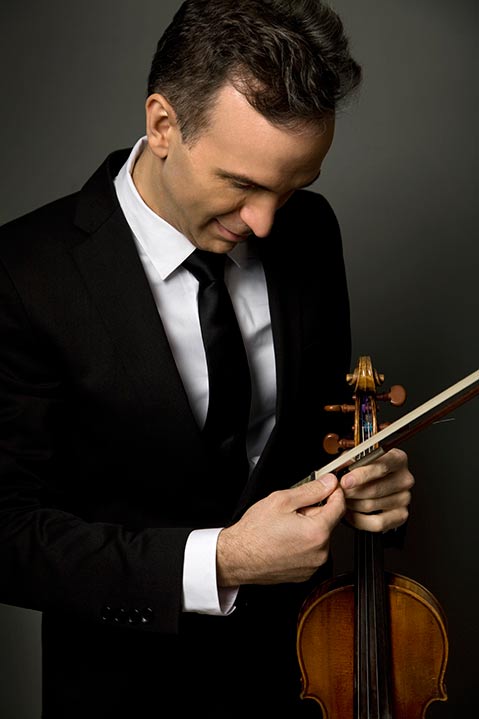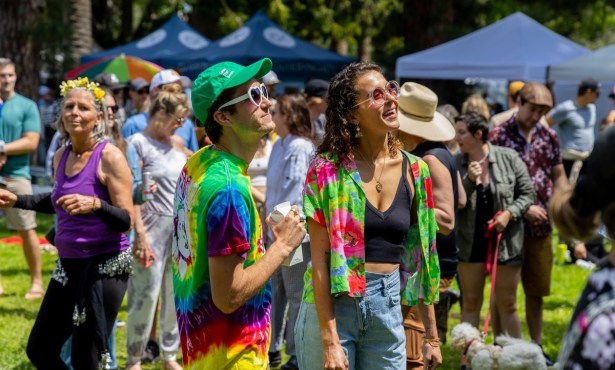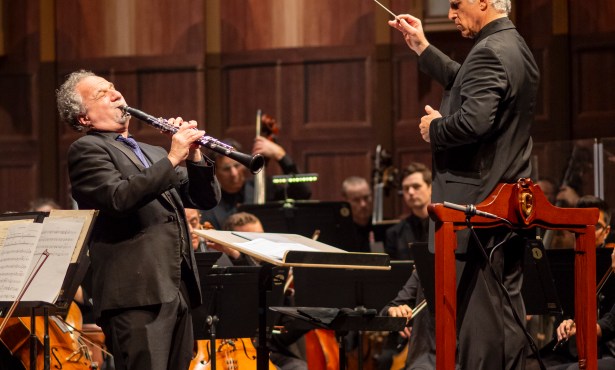Gil Shaham Tackles Bach’s Six Solos for Violin
Arts & Lectures Pairs Suites with Films by David Michalek

Call it a rite of passage to a very elite league. Past violin masters like Milstein, Perlman, Heifetz, and Grumiaux have all done it, as have Christian Tetzlaff and Hilary Hahn. And this month, with the release of his recordings of J.S. Bach’s Partitas and Sonatas for solo violin, Gil Shaham dons the robes. Even when regarding his substantial body of work — some two dozen albums in as many years — Shaham’s recording of the “six alone” (Sei solo, as Bach labeled them) stands apart as a watershed for the violinist’s maturity and daring. A cursory listen to the opening Allemande of the first Partita is refreshing: In place of a stretched dirge-like solemnity we find a lively pulse and playful skip — a reminder that these were written as dance suites. “Maybe in a way, today we’ve almost lost touch with the cultural meaning of these pieces,” Shaham suggested, speaking by phone last week. “I’m not a musicologist, you know. I’ve read articles that said the Allemande wasn’t really danced, that it was more of a theoretical dance. I also remember reading some other articles and descriptions of what the Allemande was: a man and a woman with very intricate hand-holding, switching left hand and right hand, and the man standing next to the woman and behind the woman. When I look on the page of the Bach, it seems to me that it really matches all those descriptions.”
Inevitably, a sense of the forbidden hangs at the entrance of these monuments of violin literature. The Sonatas and Partitas are pinnacles of both technique and musicality. Although the violin is limited to sounding one or two notes simultaneously, a dense implicit harmony runs through these works, suggested by tricky intervals and passing double stops. “People feel so strongly about this music, and I feel so strongly about this music that 12 years ago, I didn’t know if I was confident enough to present them for an audience. So I made a concerted effort; I decided to start playing them in concert, hoping that the more I played them, the more comfortable they’d get, and then I discovered what so many others have already said: There really is no greater joy than playing Bach.”
Curiously, when Shaham appears at the Granada Theatre this week to play selections from the “six alone,” he will not be alone. The “unaccompanied” will be visually accompanied by the films of photographer and public video art installer David Michalek. “He’s brilliant. I love his films and photography. It’s amazing: With light or with shadow, he’s able to produce certain feelings for his viewers,” said Shaham. “I thought it would lend itself to working with music, and I was thrilled to find that David was inspired by Bach, as well.” And what did Michalek come up with? “Some are still lifes, some are just flower arrangements, one is a portrait of a young girl pouring out a pitcher of water, and something quite amazing happens when you watch them at that speed — when you see it with the music, somehow our brains try to put it all together.”
“I just saw the films for the first time a couple of months ago. I’m always telling my kids to try new things, to not be worried about making a mistake, and the truth is, in real life, I rarely do that,” he continued. “This project falls a little bit under that — my trying out new things.”
Shaham performs Bach Six Solos for Violin at the Granada Theatre (1214 State St.) on Tuesday, March 31, at 7 p.m. Call (805) 893-3535 or visit artsandlectures.sa.ucsb.edu.



